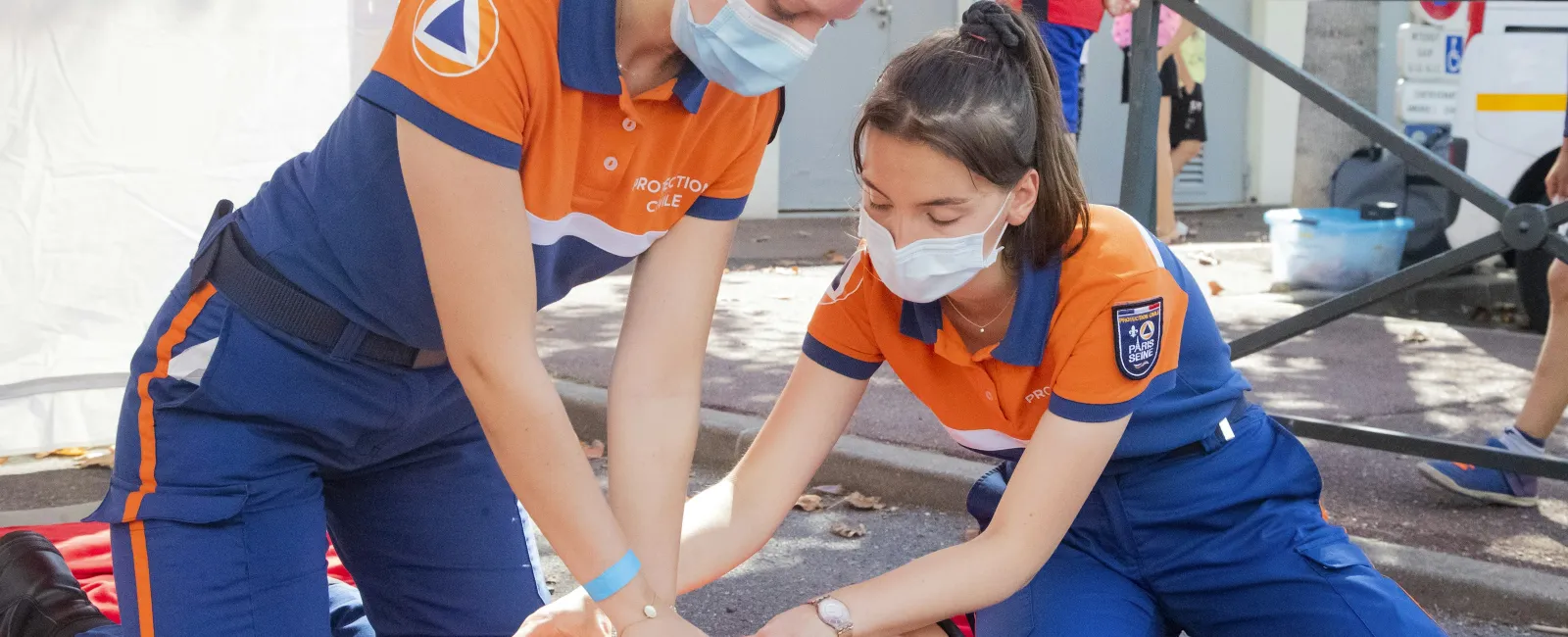Automated External Defibrillators (AEDs) are essential tools for saving lives during sudden cardiac arrest (SCA).
Their effectiveness relies on proper usage, particularly the correct placement of AED pads. In this article, we'll cover key aspects of AED pad placement, the importance of the anterolateral position, the role of AEDs in the chain of survival, and the importance of monitoring AED pad expiration dates.
Understanding AED Pad Placement
Proper AED pad placement is critical for the device to analyze heart rhythms and deliver a lifesaving shock. Here's how to ensure maximum effectiveness during an emergency:
Anterolateral Position
The anterolateral position is the most commonly recommended placement for AED pads. Place one pad on the upper right chest, just below the collarbone, and the other on the lower left side of the chest, below the pectoral muscle. This positioning allows the electrical current to pass optimally through the heart, increasing the chances of restoring a normal rhythm.
Special Considerations
- Hairy Chests: If the person has a hairy chest, quickly shave the area to ensure the pads make good contact with the skin.
- Wet or Sweaty Skin: Dry the skin thoroughly before applying the pads. Moisture can cause the electrical current to disperse on the skin, reducing its effectiveness.
- Implanted Devices or Medication Patches: Avoid placing pads directly over pacemakers or medication patches. Instead, place the pads at least an inch away from these areas, and remove medication patches using gloves.
The Chain of Survival
The prompt application of AED pads is a crucial step in the chain of survival during sudden cardiac arrest. This chain includes:
- Early Recognition and Calling for Help: Identify SCA signs and call emergency services immediately.
- Early CPR: Start CPR with strong chest compressions to maintain blood flow to the heart and brain until an AED is available.
- Early Defibrillation: Apply AED pads and use the device as soon as it arrives.
- Advanced Care: Transfer care to medical professionals as soon as they arrive.
Effective AED pad placement is vital for successful defibrillation, a key factor in increasing survival rates from SCA.
Importance of Monitoring AED Pad Expiration Dates
AED pads have a limited lifespan due to the gel adhesive that can dry out over time. Using expired pads can result in ineffective shock delivery, which is critical during a cardiac emergency. Regularly check and replace AED pads before they expire to ensure the device functions properly when needed.
Understanding Expiration Dates
AED pad expiration dates are printed on the packaging. Be aware of these dates and replace the pads well before they expire. Expired pads may not adhere properly or conduct electricity effectively, compromising defibrillation.
Routine Checks
Incorporate checking AED pad expiration dates into your regular AED maintenance routine. Whether your AED is in a public space, workplace, or home, it's crucial to ensure all components are within their effective usage period.
What to Do with Expired Pads
Replace expired pads immediately. Do not use them in an emergency, as they may not function as intended. Keep a spare set of pads on hand to ensure your AED is always ready.
Selecting and Maintaining AED Pads
Choosing and maintaining AED pads properly is vital for ensuring readiness in an emergency. Here are some tips:
Choose the Right Pads
Select the appropriate pads for the user. Pediatric pads are designed for children under eight years old or weighing less than 55 pounds. Use adult pads for everyone else.
Regular Maintenance Checks
Incorporate AED pad checks into your regular maintenance routine. Ensure pads are sealed in their original packaging and are within their usage period.
Purchase from Reputable Sources
Buy AED pads and supplies from reputable vendors to ensure quality and reliability.
Proper Storage Conditions
Store AED pads in a cool, dry place to maintain their integrity. Avoid extreme temperatures, moisture, and direct sunlight, which can degrade the adhesive gel and functionality of the pads.
Training and Familiarization
Regularly train yourself or your team on using the AED and its components, including the pads. Knowing how to apply the pads quickly and correctly in an emergency can make a significant difference in the outcome.
Conclusion
Correct AED pad placement is critical for effective defibrillation and survival during sudden cardiac arrest. By understanding proper placement, monitoring expiration dates, and performing regular maintenance, you can significantly improve the chances of saving a life. Preparedness is key, whether at home, work, or in public spaces.
Staying informed about best practices and ensuring all AED components are up-to-date will give you confidence in your ability to respond effectively in an emergency. Every second counts, and mastering AED pad placement is essential for being prepared to act when it matters most.

